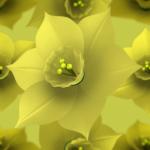 Daffodil Bulbs
Daffodil Bulbs
THE GROWING AND CARE OF DAFFODIL BULBS
The reason for the popularity of daffodils is the unmatched beauty of this flower. It is a flower that belongs to the genus Narcissus. Daffodils are generally trumpet shaped flowers with a contrasting star-shaped background. The daffodil species include the cluster-flowered yellow Jonquils, the White Narcissi and other common trumpet shaped flowers.

Daffodils are flowers that recur constantly in moderate climates. They bloom in spring in clusters. They are native to the Mediterranean region where there are altogether 50 species of daffodils and over 13,000 hybrids.
Daffodils are usually yellow but they also come in yellow and white, white and orange, yellow and orange, pink and lime green colors. The structure of a daffodil is a corona in the middle that resembles a trumpet which is surrounded with a ring of petals. You will find the natural daffodil with yellow petals and contrasting trumpet. Daffodils are found in many sizes that range from 125mm (five inch) blooms on 600mm (two foot) stems to 12mm (1/2 inch) blooms on 50mm (two inch) stems.
GROWING DAFFODILS
Daffodils grow in spring. They grow from bulbs perennially and in large clusters. When growing daffodil bulbs it is necessary to keep some things in mind.
The depth to plant a bulb should be thrice the height. This means large bulbs should be planted 150mm to 200mm (6 to 8 inches) underground, medium size bulbs have to be 75mm to 150mm (3 to 6 inches) underground and the smaller bulbs, 50mm to 75mm (2 to 3 inches) underground.
Remember that the soil protects the bulbs so they don’t break too easily. This allows the bulb to stand upright longer. If you don’t plant daffodil bulbs deeply enough the plant will bend and produce less bulbs and flowers.
When you plant daffodil bulbs choose an area of your garden that is well-drained and sunny. As with most bulbs water is good but too much water is not. The soil for daffodil bulbs should be slightly acidic. If you are planting daffodil bulbs in sandy soil you will need to plant them deeper than in clay. It is not advisable to use high nitrogen fertilizer on daffodil bulbs but they do need lots of water in the growing period.
A rule of thumb when planting daffodil bulbs is that “less is more”. It is important that you space the daffodil bulbs according to the directions on the package. Though you may feel like planting daffodil bulbs close to each other it is unwise as they are prolific in the production of bulbs. This means that if you plant daffodil bulbs too close to each other they will end up crowded and fighting each other for growing room and nutrients.
Once daffodils start blooming do not cut the foliage until it begins yellowing. This is usually between late November and December and this is the best time to dig them. The foliage of daffodil blooms should not be cut because, once they bloom, daffodils usually start rebuilding their bulbs to get ready for the next year. The foliage is used to collect both moisture and sunlight to aid this process and this is why watering of daffodil bulbs is important during this period.
Once the bulbs have been dug out they should be washed thoroughly and left to dry for at least a week. Then place them in onion sacks or panty hoses and hang them up until you are ready to plant them. Make sure you hang them in a cool place with good ventilation to keep storage rot to a minimum.
CARE OF DAFFODILS
Because daffodils are perennials they will survive with about 25mm (1 inch) of water every week. With this much water they will tend to actively grow and bloom well between the months of September and October.
It is better to use soil that is rich, well drained and with lots of organic matter for optimum growth and care of daffodils. The fertilizers for organic bulbs usually have to be placed in the hole into which the bulb is planted as these fertilizers are gentle and will not burn. Being a perennial, it is a good idea to divide the huge clumps of daffodils every five to ten years in the summer.
Daffodil bulbs sometimes have small worms in them which are basically the larval form of the lesser bulb fly and the narcissus bulb fly. These eggs are usually laid at the base of the bulb by flying adults in spring. The larvae tunnel down the leaves into the bulb where they pupate and hibernate until they emerge as adults. These larvae feed on the bulbs but they also open the tissue allowing it to be infected by rot and you will end up with mushy bulbs that die.
The cure for larvae infestation is to discard infected daffodils when replanting. All brown spots should be trimmed with a sterile sharp knife. Small spots can be dusted with a fungicidal bulb dust. Dry the bulbs for a day before replanting. If the infestation is severe you may need to drench the soil and the base of the plants with pesticides to kill the larvae.
Daffodils can be grown from bulbs and seeds. Most gardeners prefer bulbs to seed as growing daffodil from seeds can mean waiting up to five years to get a blooming daffodil plant. Daffodils grown from bulbs, on the other hand, will bloom in the spring if the bulbs are planted in autumn.



